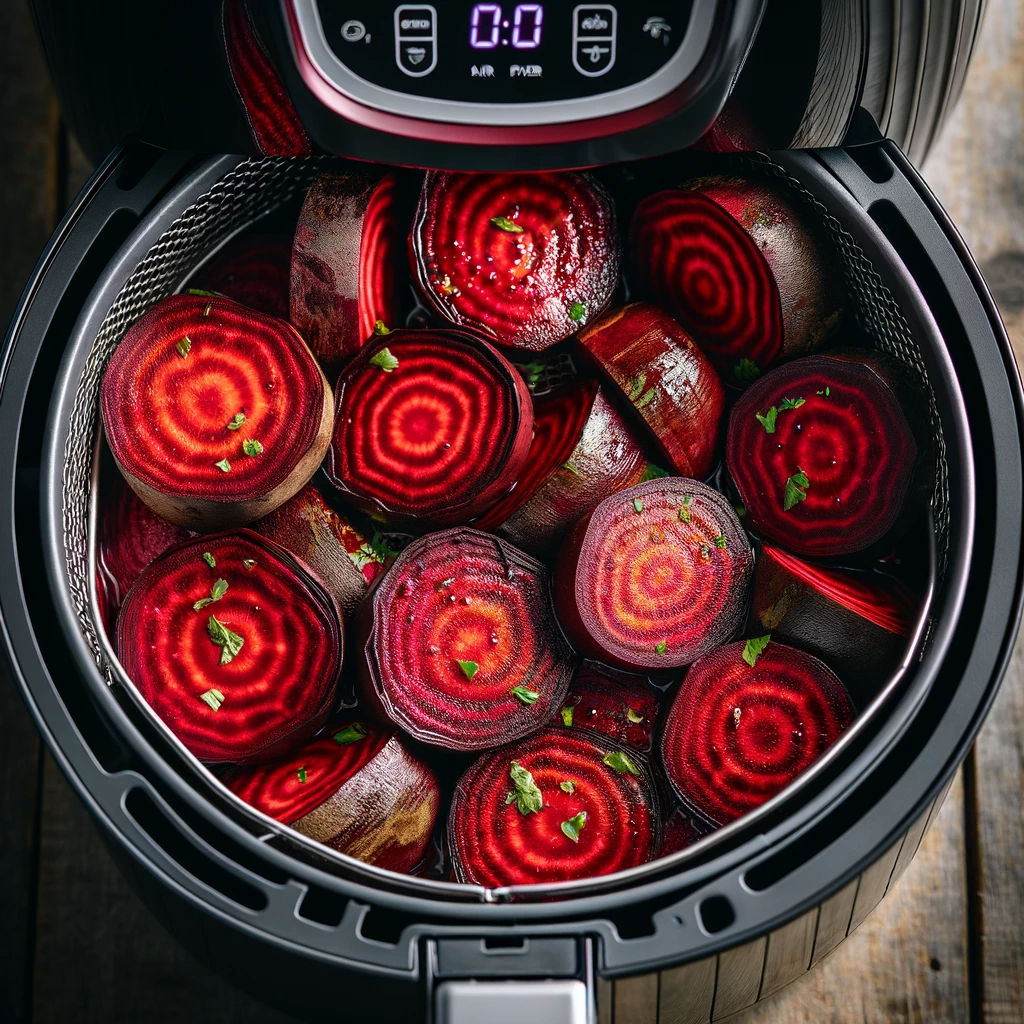Imagine transforming the humble beet, known for its earthy taste, into a tantalizing treat. That’s what I set out to do after a challenge from my son, who declared beets ‘boring’ at last year’s family BBQ. Little did I know, my quest for beet perfection would lead to seven simple, yet revolutionary methods, turning skeptics into avid fans.
How do you get rid of earthy taste in beets?
To dial down the earthiness of beets, start by giving them a good peel; it’s the first step in altering their flavor profile. Then, chop them into uniform pieces for even cooking, and boil them in slightly salted water for about 20 minutes. This process not only softens the beets but also helps in reducing their inherent earthy notes, leaving you with a sweeter, more palatable veggie.
In this guide, we’re going to uncover seven easy ways to make beets a delightful addition to any meal, minus their notorious earthy taste. From the basics of preparation to some ingenious cooking hacks, we’ll navigate through each method with ease and fun. Get ready to embark on a beet adventure that promises to transform this root vegetable from mundane to magnificent, one step at a time.
- How do you get rid of earthy taste in beets?
- At a Glance: 7 Ways to Reduce Earthy Taste in Beets
- 1. Roasting Beets to Perfection
- 2. Boiling Beets to Soften Earthiness
- 3. Using Acidic Ingredients to Balance Flavor
- 4. Fermentation for Flavor Transformation
- 5. Peeling and Cutting Techniques
- 7. Blanching for a Milder Taste
At a Glance: 7 Ways to Reduce Earthy Taste in Beets
- Roast Beets: Unlocks sweetness and mellows earthiness.
- Boil with Acidic Additions: Lemon or vinegar cuts through the earthy taste.
- Fermenting: Adds a tangy twist, altering the original flavor.
- Peel Before Cooking: Removes the outer layer that holds most of the earthy taste.
- Blanching: Softens the flavor for a more subtle taste.
- Incorporate Sweet or Spicy Elements: Balances the earthy notes.
- Serve with Complementary Flavors: Pair with ingredients that offset or complement the earthiness.
Understanding the Cause of Beets’ Earthy Flavor
Before we dive into transforming the taste of beets, it’s important to understand why they taste the way they do. Beets have a unique composition that naturally gives them an earthy flavor. A key player in this is a compound called geosmin. It’s responsible for that fresh, after-rain smell and, in beets, that distinct ‘grounded’ taste. Knowing this, we can better approach how to adjust their flavor profile.
1. Roasting Beets to Perfection
Now, let’s talk about roasting – a game-changer for beets. Roasting not only brings out a natural sweetness but also helps to mute that earthy flavor. Here’s a simple guide on how to do it: Preheat your oven. Peel and chop your beets. Toss them with a bit of oil and your choice of seasonings. Spread them on a baking sheet and roast until tender.
- Preheat your oven.
- Peel and chop your beets.
- Toss them with a bit of oil and your choice of seasonings.
- Spread them on a baking sheet and roast until tender.
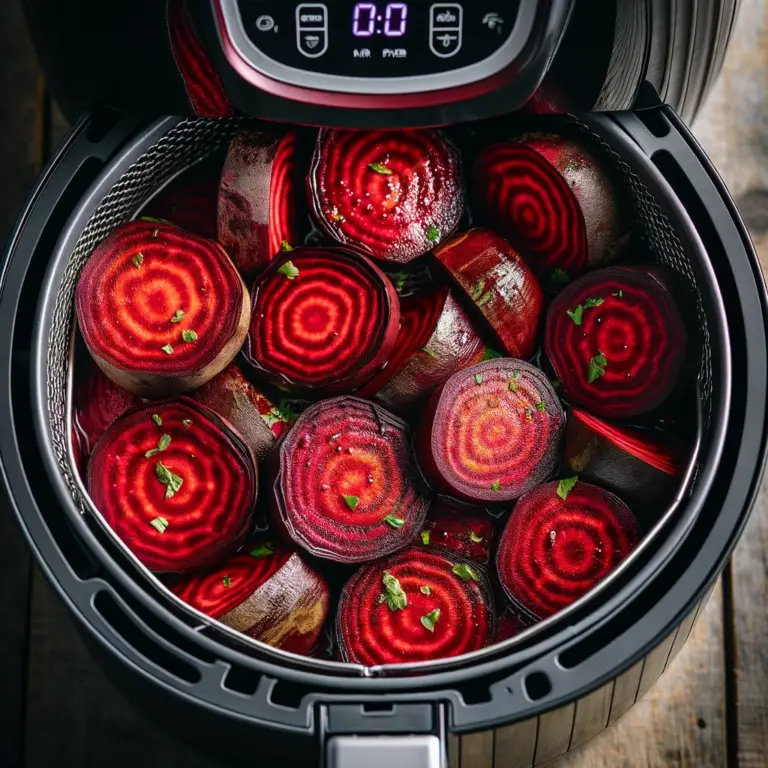
Air Fryer Roasted Beets
Enjoy the enhanced sweetness and reduced earthiness of beets with this easy, air fryer roasting method. Perfect for a healthy, flavorful side dish.
- Total Time: 30-35 minutes
- Yield: 4 servings
Ingredients
- Fresh beets, peeled and chopped
- Olive oil
- Salt and pepper, to taste
- Optional seasonings: garlic powder, thyme, or rosemary
Instructions
- Preheat your air fryer to 380°F (190°C).
- Prepare the beets: Peel and chop the beets into uniform pieces for even cooking.
- Season: Toss the beets in a bowl with olive oil, salt, pepper, and any additional seasonings.
- Arrange in air fryer: Spread the beets in a single layer in the air fryer basket. Avoid overcrowding for even cooking.
- Roast: Cook for about 20-25 minutes, shaking the basket halfway through, until the beets are tender and slightly crispy.
- Serve: Enjoy your roasted beets as a side dish or add them to salads for extra flavor.
Notes
- Adjust cooking time based on the size of your beet pieces.
- Experiment with different seasonings to find your favorite flavor combination.
- Prep Time: 10 minutes
- Cook Time: 20-25 minutes
- Category: Side Dish
- Method: Air Fryer Roasting
- Cuisine: Global
- Diet: Vegan
2. Boiling Beets to Soften Earthiness
Boiling beets is a straightforward yet effective technique to soften their robust earthy flavor. This method not only makes them more palatable but also versatile in a variety of recipes. Here’s how to master the art of boiling beets:
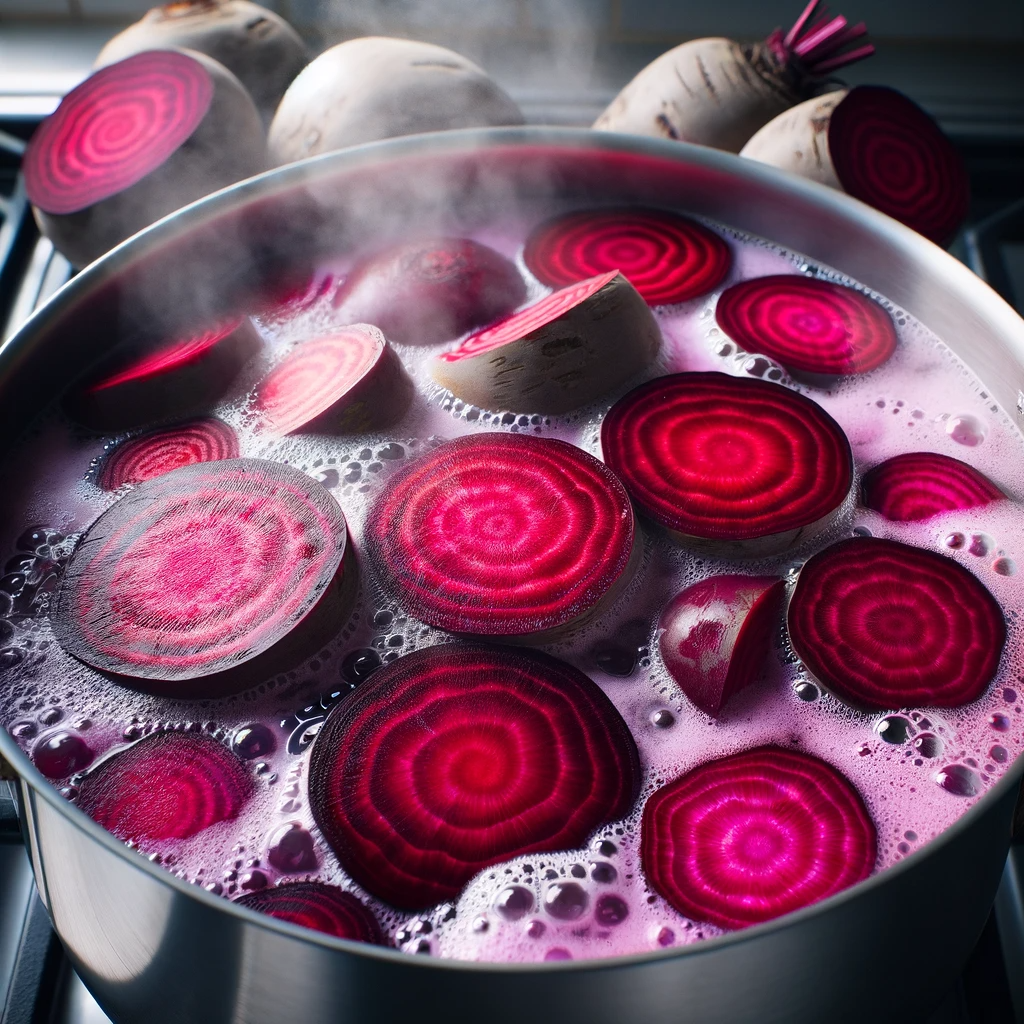
- Water-to-Beet Ratio: Start by selecting fresh, firm beets. For every pound of beets, you’ll need about 2 to 3 quarts of water. This ratio ensures the beets are completely submerged and cook evenly.
- Preparation: Before boiling, clean the beets thoroughly under running water. Trim off the beet greens, leaving about an inch of the stem to prevent bleeding, which preserves color and nutrients.
- Boiling Process: Place the cleaned beets in a large pot and pour in enough water to cover them completely. Add a pinch of salt to the water – this helps to enhance the beets’ natural flavors. Bring the water to a boil, then reduce the heat to a simmer.
- Ideal Boiling Time: The cooking time can vary depending on the size of the beets. Small beets might take around 25 minutes, while larger ones could require up to 45 minutes to become tender. The best way to check for doneness is to insert a fork or skewer into a beet; it should slide in easily without resistance.
- Cooling Down: Once boiled, drain the beets and let them cool until they’re safe to handle. The skins will slip off easily at this point – you can use a paper towel to rub the skin off gently.
- Flavor Reduction: Boiling beets helps to significantly reduce their earthy taste by diffusing some of the compounds responsible for it into the water. It also brings out a natural sweetness and softens the texture, making them ideal for salads, purees, or even as a healthy snack.
- Versatility in Recipes: Boiled beets are incredibly versatile. They can be sliced into wedges for a vibrant addition to green salads, diced for a colorful beet salsa, or pureed with some seasoning for a smooth, flavorful beet dip.
By following these detailed steps, you can easily boil beets to perfection, reducing their earthiness and unlocking a range of culinary possibilities.
3. Using Acidic Ingredients to Balance Flavor
Transforming beets from earthy to extraordinary can be as simple as introducing some acidity into the mix. Acidic ingredients, like vinegar or lemon juice, work like culinary magic, slicing through the earthy notes and adding a refreshing, bright twist to the beets’ flavor profile. Here’s a detailed look at how to master this technique:
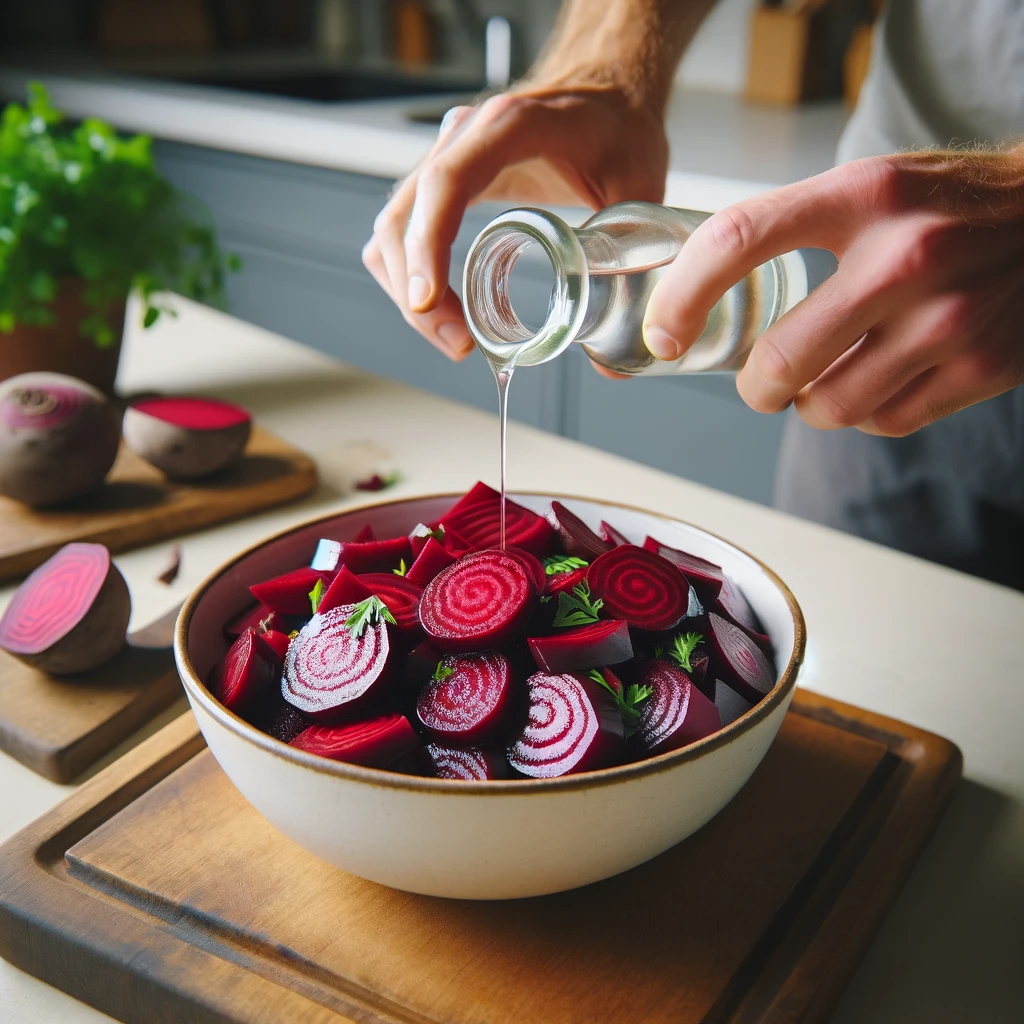
- Choosing Your Acid: The type of acidic ingredient you use can make a significant difference. For a milder, more nuanced tang, apple cider vinegar or red wine vinegar are excellent choices. For a sharper, more pronounced zing, lemon or lime juice works wonders. Balsamic vinegar, with its sweet and sour profile, can add a gourmet touch to your beets.
- Incorporation Methods:
- During Cooking: One effective way to incorporate acidity is by adding it to the cooking water. When boiling beets, a couple of tablespoons of vinegar or lemon juice in the water can help mitigate the earthiness. This method infuses the beets with a subtle tanginess throughout.
- Post-Cooking Dressing: Another approach is to dress the beets after they’ve been cooked. Whether they’re roasted, boiled, or steamed, a drizzle of your chosen acid just before serving can enhance the flavor. This method is particularly useful if you’re looking for a more pronounced acidic note in your dish.
- Flavor Transformation: The addition of acidic ingredients does more than just counterbalance the earthiness; it opens up the beets’ flavor, allowing their natural sweetness to shine through. This flavor enhancement is particularly noticeable in salads where beets are mixed with leafy greens, nuts, and cheese. The acidity cuts through the fattiness and richness of other ingredients, bringing a delightful balance to the dish.
- Creative Combinations: Don’t hesitate to experiment with different combinations. For instance, pairing roasted beets with a balsamic glaze and goat cheese creates a harmonious blend of flavors. Similarly, boiled beets dressed with lemon juice, olive oil, salt, and pepper make for a refreshingly simple yet flavorful side.
- Health Benefits: Beyond taste, there’s a nutritional bonus. Vinegar and lemon juice are known for their health properties, including digestive benefits and antioxidant content, making your beet dish not only tastier but also healthier.
In summary, the use of acidic ingredients in preparing beets is a simple yet effective way to alter and enhance their flavor. It’s a testament to how a small tweak in the cooking process can lead to a significant transformation in taste.
4. Fermentation for Flavor Transformation
Fermentation isn’t just a food preservation method; it’s a culinary alchemy that can utterly transform the inherent character of beets. This age-old technique not only softens the earthy notes but also introduces a whole new spectrum of tangy and complex flavors. Here’s how you can embark on this fermentation journey with beets:
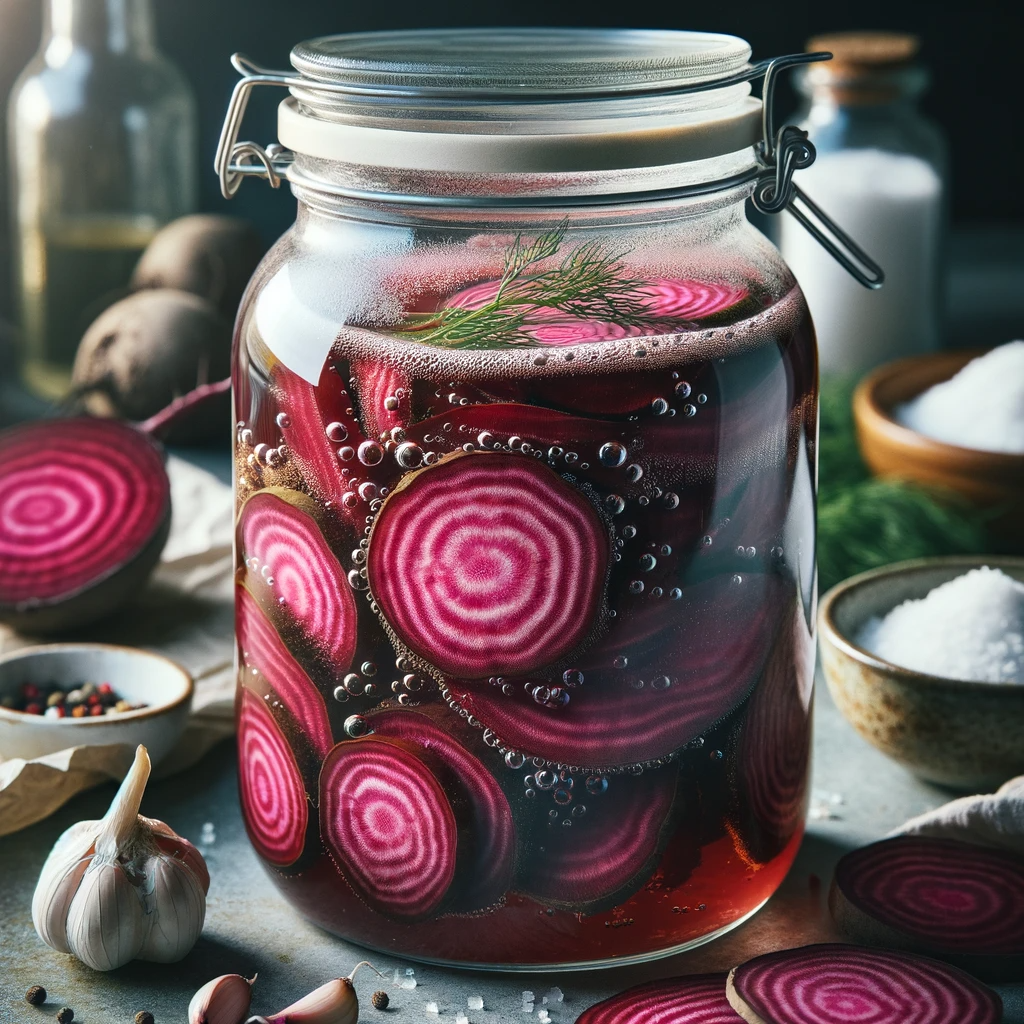
- Understanding Fermentation: Fermentation is the process where natural bacteria feed on the sugar and starch in the food, creating lactic acid. This process not only preserves the beets but also creates beneficial enzymes, b-vitamins, Omega-3 fatty acids, and various strains of probiotics.
- Choosing Beets: For fermentation, fresh, firm beets work best. They should be free from bruises and cuts to ensure a clean ferment.
- Preparation for Fermentation:
- Cleaning: Start by thoroughly washing the beets. It’s important not to peel them, as the skin hosts beneficial bacteria essential for fermentation.
- Slicing: Slice the beets thinly or cut them into small cubes. Uniform sizes ensure even fermentation.
- Creating the Brine:
- Dissolve about 1-3 tablespoons of non-iodized salt in a quart of water. The salt concentration can vary depending on your taste preference and the amount of beets.
- For added flavor, consider incorporating spices like dill, garlic, or mustard seeds.
- Fermentation Process:
- Place the beets in a clean, sterilized jar and pour the brine over them, ensuring they are completely submerged.
- Leave about an inch of space at the top of the jar to allow for expansion.
- Seal the jar with a fermentation lid or a regular lid slightly loosened to allow gases to escape.
- Let the jar sit at room temperature, away from direct sunlight, for 7-14 days. The length of fermentation can vary based on temperature and desired tanginess.
- Flavor Transformation: As the beets ferment, they develop a tangy flavor, losing much of their earthiness. The texture becomes tender yet retains a satisfying crunch. The end product is a vibrant, tangy beet that can be used in salads, as a side dish, or even as a snack.
- Storing Fermented Beets: Once fermented to your liking, beets can be stored in the refrigerator. The cold temperature slows down the fermentation, preserving their flavor and texture for several months.
Fermentation is a fascinating way to explore the versatility of beets, turning them into a gourmet ingredient that can elevate the simplest of dishes.
5. Peeling and Cutting Techniques
Approaching beets with the right preparation techniques is a crucial step in ensuring their best flavor and texture. It’s a simple, yet often overlooked, part of cooking that can significantly reduce the earthy taste of beets. Let’s dive into some effective peeling and cutting methods:
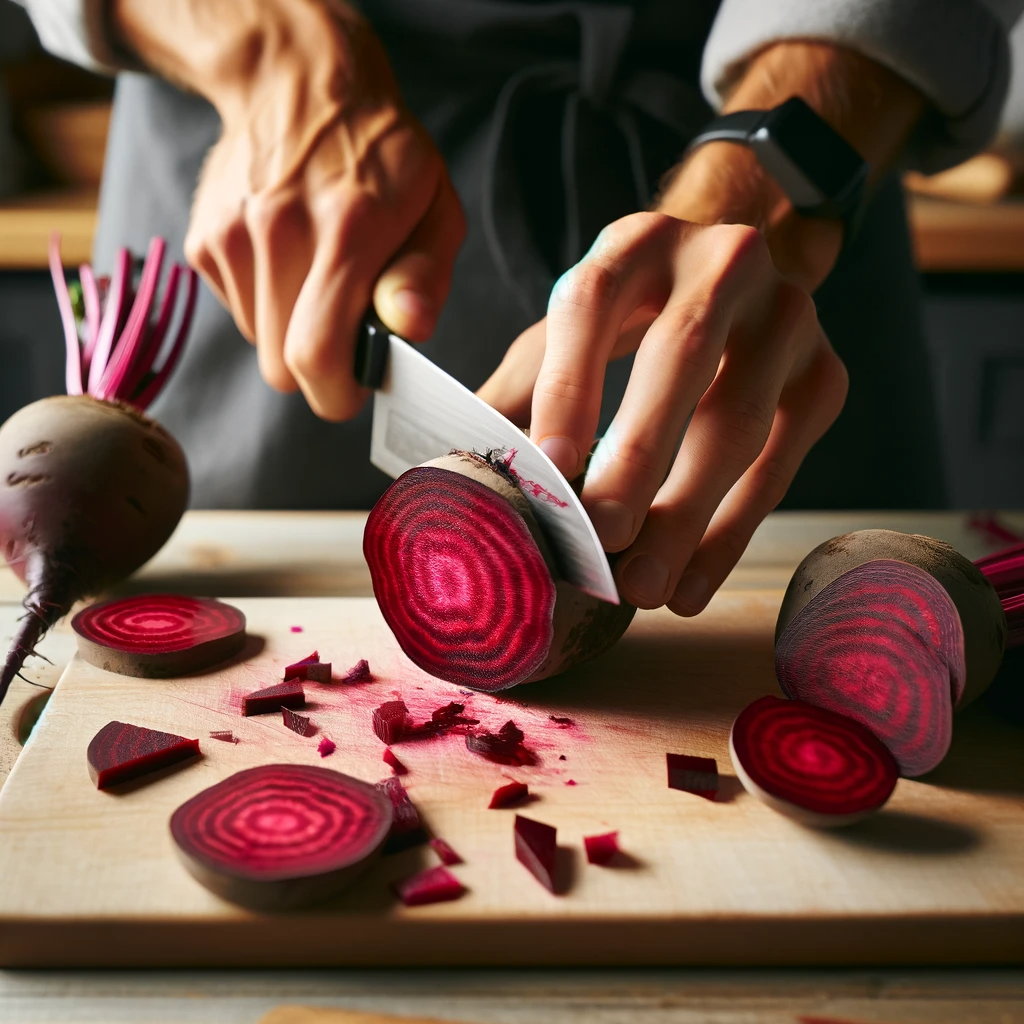
- Why Peel Beets:
- The skin of beets, while edible, is where most of the earthy flavor is concentrated.
- Peeling beets removes the outer layer that harbors soil and other impurities, revealing the sweet, more palatable flesh underneath.
- For cooked beets, it’s often easier to peel them after boiling or roasting, as the skin comes off more readily.
- How to Peel Beets:
- If you’re peeling raw beets, use a vegetable peeler or a paring knife.
- Hold the beet firmly and glide the peeler or knife over the surface, removing the skin.
- For post-cooking peeling, simply rub the skin off with a paper towel or the back of a knife.
- Cutting Techniques:
- Dicing: Ideal for salads or as an addition to soups. Dice beets into uniform cubes for even cooking and a pleasant mouthfeel.
- Slicing: Perfect for roasting or pickling. Thin slices ensure quick and even cooking, and they also absorb flavors and marinades well.
- Julienning: Great for slaws or garnishes. Julienned beets add a crunchy, colorful element to dishes.
- Impact on Texture and Flavor:
- The way you cut beets affects not just their texture but also how they absorb flavors.
- Smaller, thinner cuts tend to cook faster and can take on the flavors of accompanying ingredients more readily.
- Safety Tips:
- Beets can stain, so you might want to wear gloves while handling them.
- Use a stable cutting board and a sharp knife for safety and ease.
By mastering these peeling and cutting techniques, you’ll be well on your way to enjoying beets in their most palatable form. Whether you’re roasting, boiling, or serving them raw, the way you prepare your beets can make all the difference in your dish.
6. Pairing with Complementary Flavors
Creating a culinary masterpiece with beets isn’t just about how you cook them; it’s also about what you pair them with. The right combination of flavors can turn even the earthiest beets into a delightful dish. Here’s how to pair beets with complementary flavors to elevate their taste:

- Spices and Herbs:
- Herbs: Fresh herbs like mint, dill, and parsley add a refreshing contrast to the sweet and earthy nature of beets. For instance, mint brings a cool, bright note that is especially delightful in the warmer months.
- Spices: Warm spices like cumin, coriander, and nutmeg can enhance the inherent sweetness of beets. A touch of cinnamon or cardamom can add an unexpected twist to beet dishes.
- Cheeses and Dairy:
- Soft cheeses like goat cheese or feta offer a creamy, tangy element that pairs beautifully with the texture and flavor of beets. The sharpness of the cheese cuts through the sweetness, creating a well-rounded taste.
- Yogurt or sour cream can also be a great addition, especially in beet dips or as a topping for roasted beets.
- Citrus and Acidic Components:
- The acidity of citrus like oranges, lemons, or limes balances the earthy flavors of beets. They also add a bright, fresh aspect to beet dishes.
- A splash of vinegar, such as apple cider or balsamic, can also provide a similar effect, enhancing the natural flavors of beets.
- Nuts and Seeds:
- Nuts like walnuts, almonds, or pine nuts add a crunchy texture and a nutty flavor that complements the softness of cooked beets.
- Seeds such as pumpkin or sunflower seeds can also add a delightful crunch and a burst of flavor.
- Recipe Ideas:
- Beet and Feta Salad: A classic combination where the saltiness of feta balances the sweetness of beets.
- Beetroot Carpaccio with Citrus Dressing: Thinly sliced beets with a zesty citrus dressing, ideal for a light appetizer.
- Mint-Infused Beet Smoothies: A refreshing and healthy drink, where mint adds a fresh twist to the earthy beet flavor.
By thoughtfully pairing beets with these complementary flavors, you can create dishes that are not only visually appealing but also tantalizing to the taste buds. These combinations are sure to convert even the most skeptical eaters into beet lovers.
7. Blanching for a Milder Taste
Blanching is a culinary technique that involves briefly cooking food in boiling water and then plunging it into cold water to halt the cooking process. This method is particularly beneficial for beets, as it can help in reducing their earthy taste while preserving their vibrant color and firm texture. Here’s a closer look at how to blanch beets effectively:
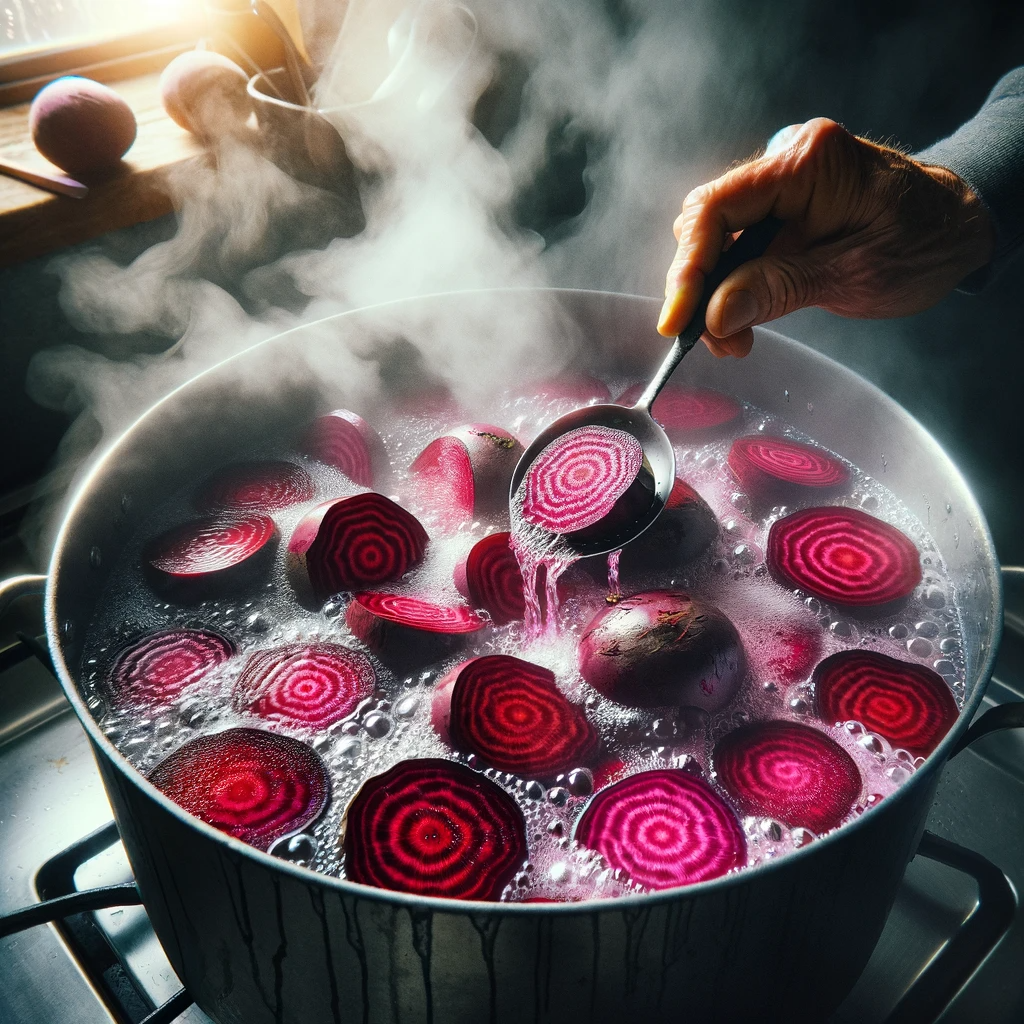
- Blanching Process:
- Preparation: Start by cleaning the beets and trimming off the tops and roots. If the beets are large, you may want to cut them into smaller, evenly sized pieces for uniform cooking.
- Boiling Water: Bring a large pot of salted water to a rolling boil. The salt enhances the beets’ natural flavor.
- Submerging Beets: Carefully place the beets in the boiling water. For whole small beets, blanch for about 3-5 minutes. For larger or cut pieces, adjust the time to 5-7 minutes.
- Ice Bath: While the beets are boiling, prepare a bowl of ice water. As soon as the blanching time is up, use a slotted spoon to transfer the beets immediately into the ice water. This stops the cooking process and helps to retain the beets’ crisp texture and bright color.
- Peeling: Once the beets have cooled, you can easily peel off their skin. The blanching process loosens the skin, making it slide off effortlessly.
- Benefits of Blanching:
- Flavor Modification: Blanching beets gently cooks them, which can help to reduce their earthy taste significantly. This makes them more palatable, especially for those who are not fond of the strong earthy flavor.
- Texture Preservation: Unlike boiling or roasting, blanching ensures that beets remain crisp and firm, making them perfect for salads, pickling, or as a healthy snack.
- Color Retention: Blanching helps in preserving the vivid color of beets, which can enhance the visual appeal of any dish they are added to.
Blanching is an excellent way to prepare beets for a variety of culinary applications. It’s a simple yet effective method to soften the flavor of beets while maintaining their best qualities, making them a versatile ingredient for both warm and cold dishes.
Conclusion
As we wrap up our journey through the seven transformative methods to reduce the earthy taste of beets, it’s clear that this vibrant root vegetable is far more versatile and adaptable than many of us may have realized. From the deep, caramelized flavors brought out by roasting to the refreshing tang imparted by acidic ingredients, each method offers a unique way to enjoy beets. The ancient art of fermentation unlocks complex flavors, while simple techniques like peeling, cutting, and blanching can make all the difference in texture and taste. Pairing beets with the right flavors can turn them into a culinary delight, showcasing their ability to shine in a variety of dishes.
Now, it’s your turn to take these insights into your kitchen. Experiment with these methods, mix and match them, and find what works best for your palate. Beets, with their numerous health benefits and bold colors, are not just nutritious but can also bring excitement and variety to your meals. Whether you’re a long-time beet lover or just starting to explore this wonderful vegetable, there’s always a new way to experience its flavors.
For more information on the health benefits of beets and delicious recipes, you might find these resources helpful:

